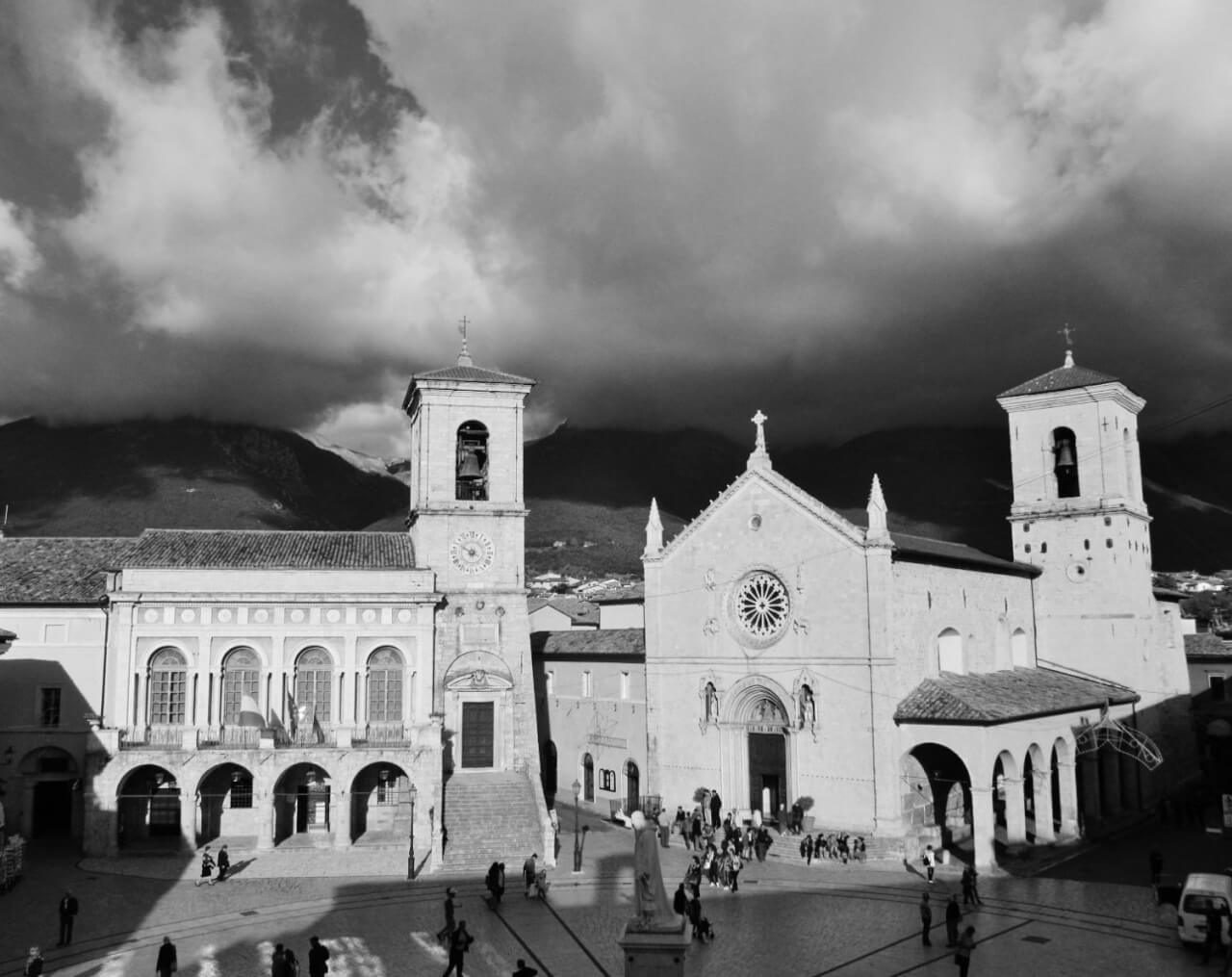I’ve never been to Norcia, but before the seemingly-endless series of earthquakes that ravaged the town and destroyed the Basilica of St. Benedict, I would imagine it as my friend Hilary White described it, or as it was captured so beautifully in the photographs and descriptions (like the one above) offered by Julian Kwasniewski. Just the other evening — and not for the first time — I was listening to my album of Marian chant from the Monks of Norcia, and as the bells of the Basilica pealed in the first track, the thought struck me again that this is a sound that might never be heard again. As I listened to the chanting, I took note of the particular echo of the particular place, as unique as a fingerprint, but forever lost in the recent past.
Several days ago, our friends at Juventutem DC posted a note on their Facebook page about a recent development in Norcia that has many supporters of the Benedictines there on edge:
Dr. Robert Moynihan in his latest letter (email only right now) reports some very depressing news from the Monks of Norcia / Monaci di Norcia:
“They told me that the archbishop of Spoleto, Renato Boccardo, age 64 — who has jurisdiction over Norcia — has decided that he will rebuild the Basilica of St. Benedict in a modern style of architecture. He will also take possession of the quarters where the monks had been living from the year 2000 until October 2016. He will use the quarters as a part-time episcopal residence.
“So the Benedictine monks of Father Cassian will not return to the center of Norcia, to the spot where St. Benedict and his twin sister St. Scholastica were born. That period of the monastery’s life is over now, it seems. The monastery will now be built on the hillside above the city, about two miles outside of the city walls.”
In an update to their post later the same day, they revealed:
The Monks of Norcia have made a somewhat cryptic comment confirming Dr Moynihan’s report in a new blog post today on their website, in Italian:
“For us monks, there have been struggles: on minor things, like the type of brick to be used to the roof, but also about serious things, such as how to meet the high hopes that the community has placed in us after the earthquake. The Archbishop has shared with us his concern for the pastoral needs of Norcia, and this has allowed us to understand more clearly that our task is to live more deeply the monastic life in the new monastery on the mountain, because God seems to have other plans for the oldest monastery in the city.”
The website of the Benedictines of Norcia also indicates that the monks move to the mountains outside of town will be a permanent relocation:
For 16 years, the monks acted as guardians over the historic birth home of St. Benedict and his twin sister St. Scholastica. The monks are grateful to the many who helped them restore the basilica to great beauty over the course of those blessed years.
Now, the European Union and the Italian state have pledged to restore the basilica and monastery. The Archdiocese of Spoleto-Norcia, which owns the buildings, has decided that the spaces will have to be used by the diocese since all the other churches in town were also destroyed. Throughout the many years needed for the massive work of reconstruction, while the monks work to build the new monastery in Monte, their hearts will remain there in the ancient crypt of the basilica, the birth home to their great founder and father, St. Benedict.
In Italy, there are bureaucratic protections against arbitrary changes to historic places like the Monastery of St. Benedict. This means that the bishop may well be fighting both local and national governments — including the agency known as the Beni Culturali — if he wants to make architectural “improvements” rather than simply restoring the monastery.
The Benedictines of Norcia also have oblates from around the world, so the repercussions of any such action would be far more than local. I am told by sources close to the Monastery that the Nursini themselves — the natives of Norcia — are very fond of the Benedictines, are proud of their presence there, and that the local bishop would become very unpopular if he displaced them.
But it’s hard not to read a finality into the words of the monks themselves. It’s a tragic thought that a time may well be returning when no Benedictines will serve in the birthplace of their founder.



